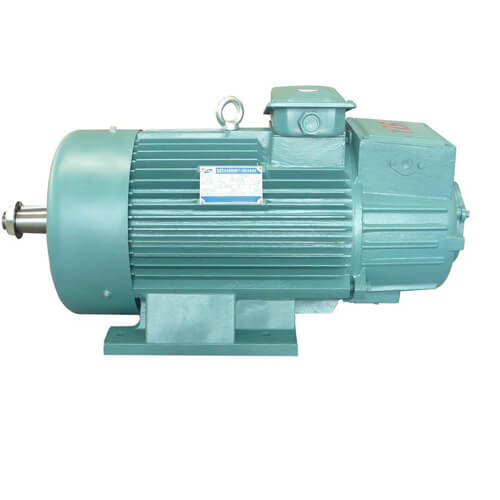What is the difference between induction motor and slip ring motor?
Electric motors play a pivotal role in powering various machines and systems, and two commonly used types are induction motors and slip ring motors. While both serve the purpose of converting electrical energy into mechanical energy, they differ significantly in their construction, operation, and applications.
Induction Motor:
Construction:
Induction motors are robust and relatively simple in construction.
They consist of a stator (stationary part) and a rotor (rotating part).
The rotor is typically a squirrel cage structure made of conducting bars.
Operation:
Induction motors operate on the principle of electromagnetic induction.
When AC power is applied to the stator winding, a rotating magnetic field is produced, inducing current in the rotor bars.
The interaction between the magnetic field and rotor currents generates torque, causing the rotor to rotate.
Starting Mechanism:
Induction motors are often designed with squirrel cage rotors, making them inherently self-starting.
The rotating magnetic field induces currents in the rotor, eliminating the need for external starting mechanisms.
Speed Control:
Induction motors typically operate at a constant speed determined by the frequency of the power supply.
Speed control is limited, and significant variations in speed are challenging without additional devices.
Slip Ring Motor (Wound Rotor Motor):
Construction:
Slip ring motors have a more complex construction compared to induction motors.
Instead of a squirrel cage rotor, slip ring motors feature a wound rotor with external terminals connected to slip rings and brushes.
Operation:
The wound rotor allows for external resistance to be connected via the slip rings during startup.
The addition of resistance in the rotor circuit controls the starting current and torque, enabling smoother starts and reduced stress on the power supply.
Starting Mechanism:
Slip ring motors offer variable resistance in the rotor circuit, providing a more controlled and adjustable startup mechanism.
The external resistance is gradually reduced as the motor accelerates.
Speed Control:
One of the key advantages of slip ring motors is their ability to provide variable speed control.
By adjusting the external resistance, the speed-torque characteristics can be tailored to specific requirements.
Applications:
Induction Motor Applications:
Induction motors are widely used in applications where constant speed is acceptable, such as fans, pumps, and conveyor systems.
Their simplicity, reliability, and cost-effectiveness make them suitable for various industrial and commercial uses.
Slip Ring Motor Applications:
Slip ring motors find applications in scenarios where controlled starting torque, reduced inrush currents, and variable speed are essential.
Common applications include heavy-duty machinery, mills, crushers, and situations requiring adjustable speed and torque characteristics.
In summary, the choice between an induction motor and a slip ring motor depends on the specific requirements of the application. Induction motors offer simplicity, reliability, and cost-effectiveness for applications with constant speed needs. On the other hand, slip ring motors provide controlled starting mechanisms, reduced inrush currents, and variable speed capabilities, making them suitable for applications demanding flexibility and precision in motor performance. Understanding the distinctions between these two types of motors is crucial for selecting the most suitable option for a given industrial or commercial setting.
Previous: What Are the Dynamics of China's Diversified Machinery Industry?
Next: Which is Better for Clearing Land, an Excavator or a Bulldozer?
If you are interested in sending in a Guest Blogger Submission,welcome to write for us!





Comments
0